EAST HAMPTON MAIN STREET HISTORIC DISTRICT
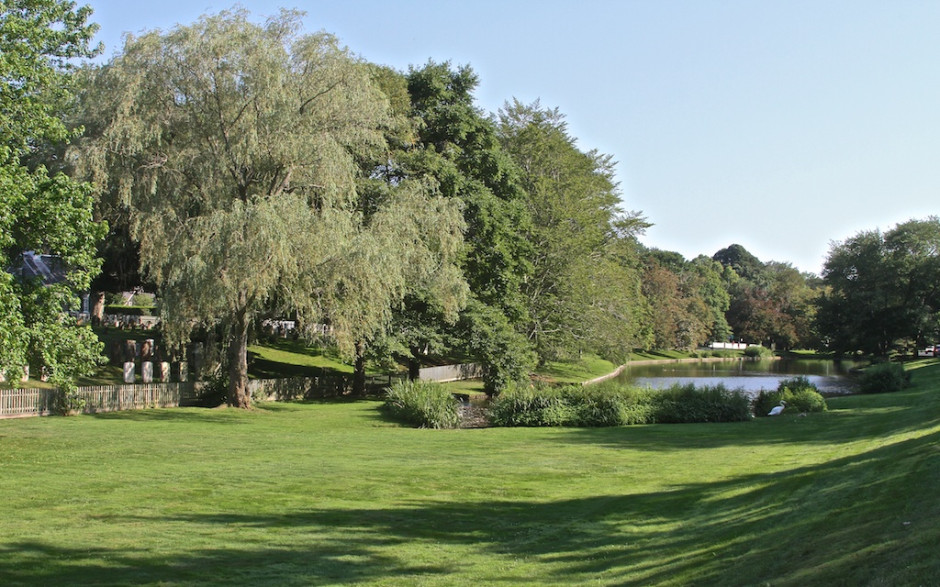
1648 VILLAGE GREEN, EAST HAMPTON
The buildings and landscapes within East Hampton’s Main Street Historic District recall important themes and periods in the history of the Village, from its founding in 1648 through two centuries as an agrarian community to its flowering as a summer resort. The Village Green recalls the very beginning of East Hampton. The settlers who arrived here from New England in 1648 laid out a broad common down the center of the fertile coastal plain beside Hook Pond. Their dwellings lined either side of the common, and on the common they built their meeting house. This compact settlement was typical of Puritan New England villages. The remnant of the 1648 common includes Town Pond, once a livestock watering hole, and the South End Burying Ground with gravestones from the 1600s.
****************************************
WALKING TOUR–EAST SIDE
North to South
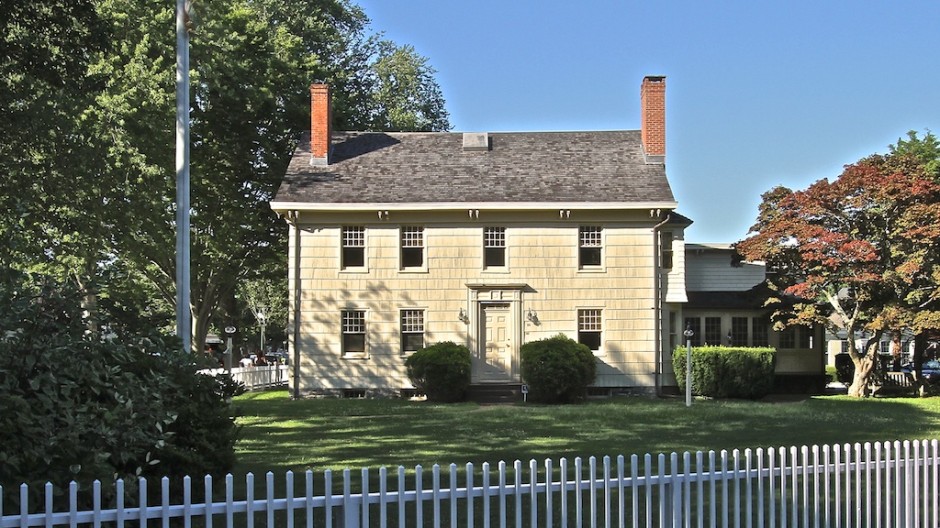
LYMAN BEECHER HOUSE: Rev. Lyman Beecher lived here from 1799 to 1810. Renovations made by George Hand in 1850 include the fine Greek Revival doorway. It is now East Hampton Village Hall.
Visit: East Hampton Village Hall

HUNTTING INN: The original house was built for Rev. Nathaniel Huntting in 1699. Much enlarged, it has served as an inn since the American Revolution.
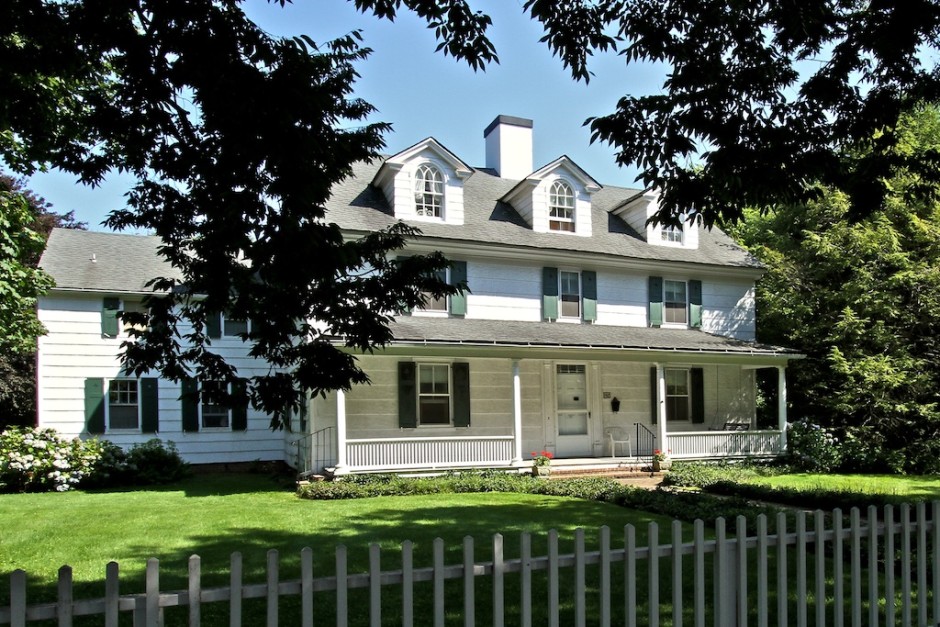
DAVID HUNTTING HOUSE: This circa 1800 house had dormer windows and a porch added in 1923, but the central chimney and double front doors are clues to its past. Private residence.

FIRST PRESBYTERIAN CHURCH OF EAST HAMPTON: An 1861 Romanesque revival church was remodeled in the Colonial Revival mode in 1960 with the addition of the portico, bell tower and spire.
Visit: First Presbyterian Church of East Hampton

PRESBYTERIAN MANSE: An 1830s single house built for cobbler Thomas Isaacs was enlarged to its present width in the 1880s.
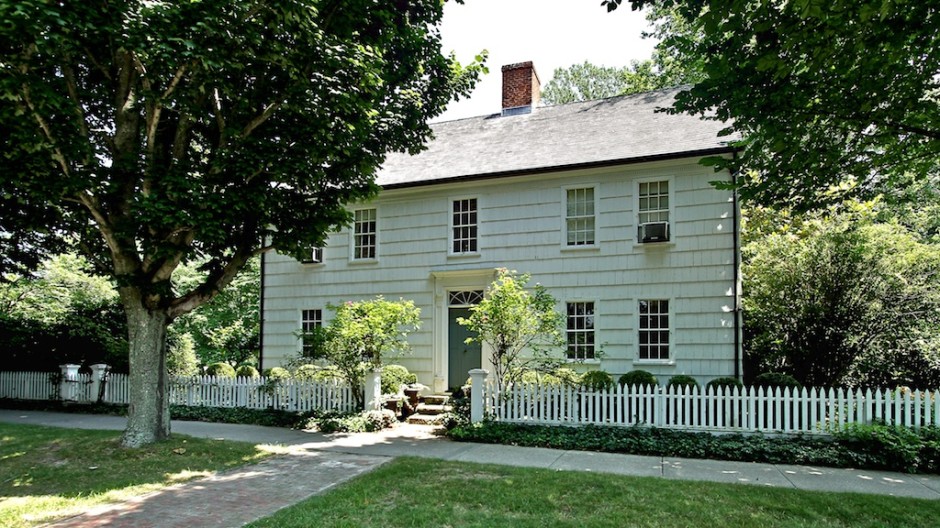
SHERRILL HOUSE: A beautiful federal doorway graces this 1800 home. Simple and elegant, Samuel Sherrill’s house represents the conservative tastes of early residents. Private residence.

FRANK CARTWRIGHT HOUSE: This simple Queen Anne style home with high ceilings, a large veranda, and a decorative verge board at the top of the front gable dates from 1885. Private residence.
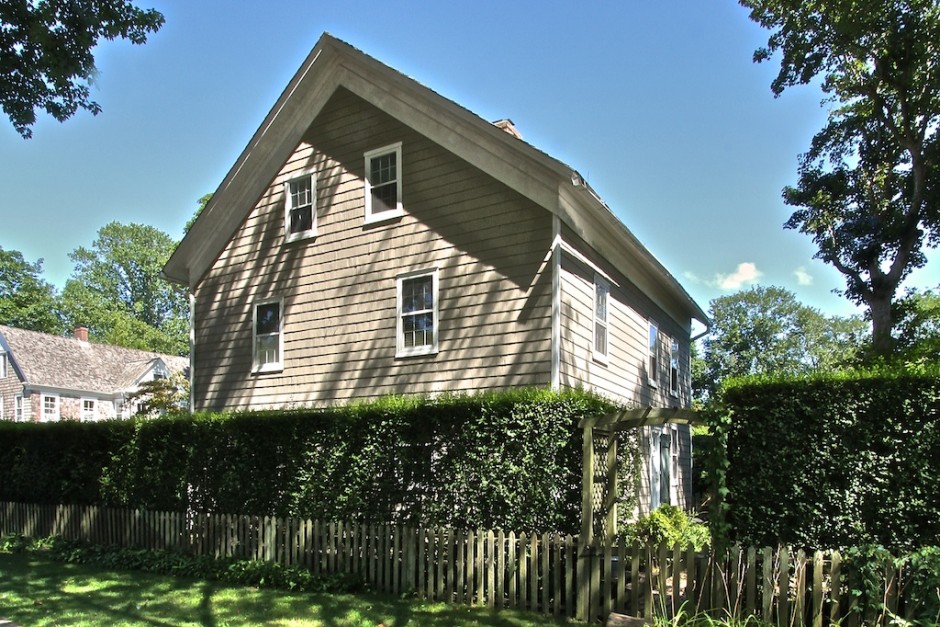
THOMAS WICKHAM HOUSE: This early saltbox was remodeled with a gable roof about 1865. Dr. George Huntington, who investigated Huntington’s Disease, lived here in the 1870s. Private residence.
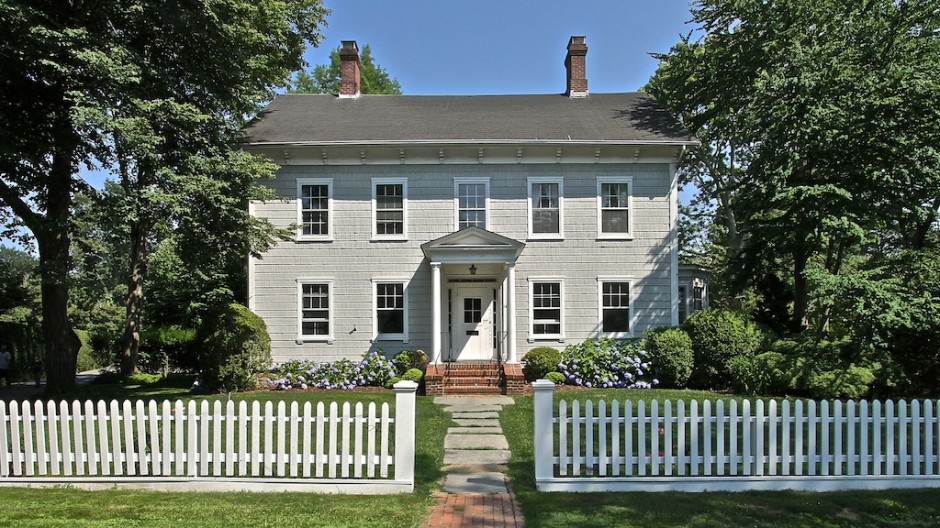
JEREMIAH MULFORD HOUSE: This stately Greek Revival/Italianate design house was built for Capt. Jeremiah Mulford about 1860. He sailed a number of Sag Harbor whaling ships. Private residence.

JAMES ARROWSMITH HOUSE: This 1870 house is one of East Hampton’s few Italianate dwellings. The very tall windows, wide eaves, and bold window hoods are typical of this Victorian-era design. Private residence.

SAMUEL G. MULFORD HOUSE: Tall and narrow, this circa 1800 house, and others like it, are often called “single houses” since they are only one room wide. Private residence.

GUILD HALL: This striking Georgian Revival building, designed by architect Aymar Embury, was opened in 1931 as a combination art gallery and performing arts space.
Visit: Guild Hall, Center for the Visual and Performing Arts
Also, February 16, 2022 Announcement of Planned Capital Improvements / link

JOHN DREW THEATER AT GUILD HALL

Dennis Oppenheim, Straight Red Trees / Alternative Landscape Components, 2006. On view through April, 2019.
—————————————————-
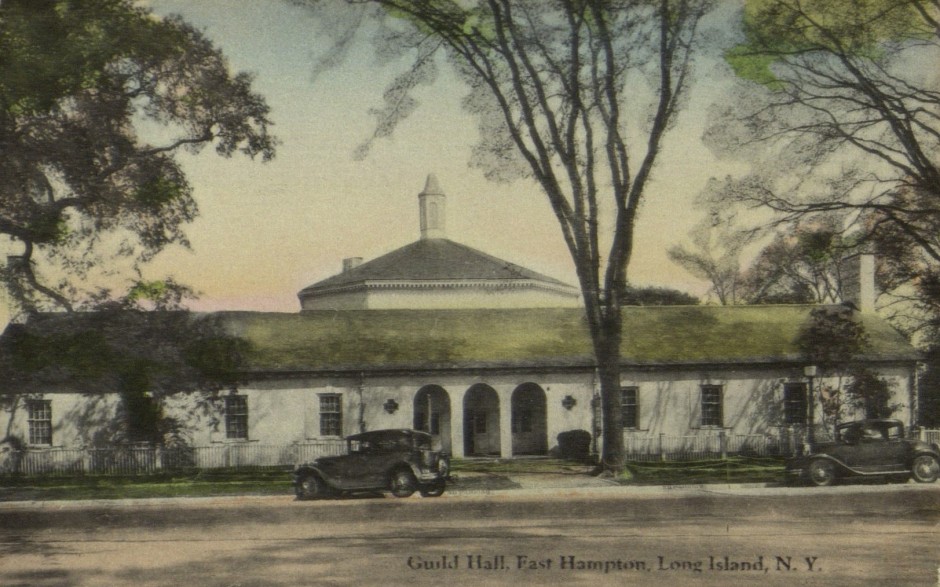
Harvey Ginsberg Postcard Collection. Courtesy of the East Hampton Library’s Long Island Collection.
——————————————-
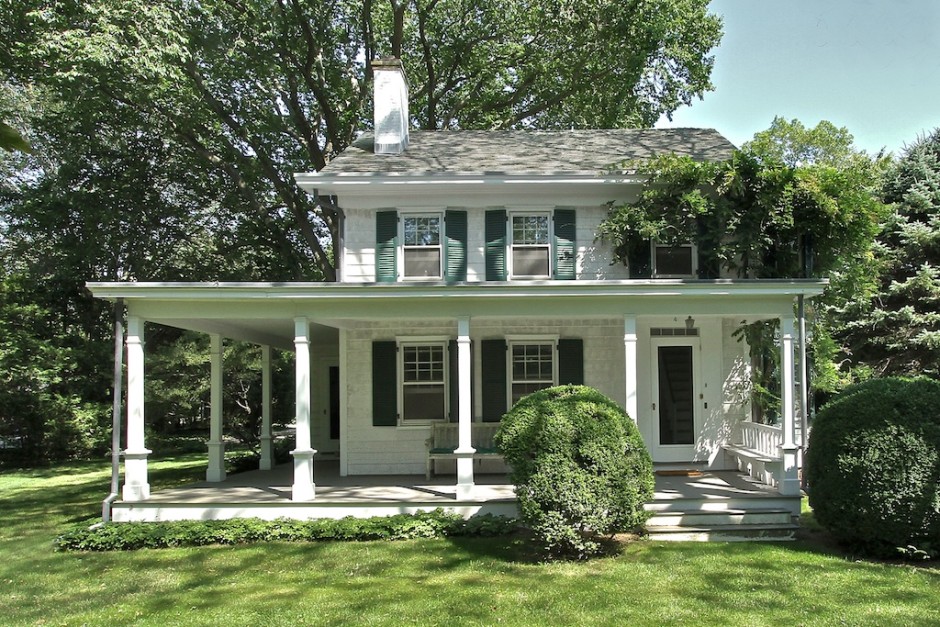
HENRY TUTHILL HOUSE: The wide porch and bay window were added to this 1880s house in 1886. E. Voltaire Homan, who ran East Hampton’s first stage to Brooklyn, lived here in the 1850s. Private residence.
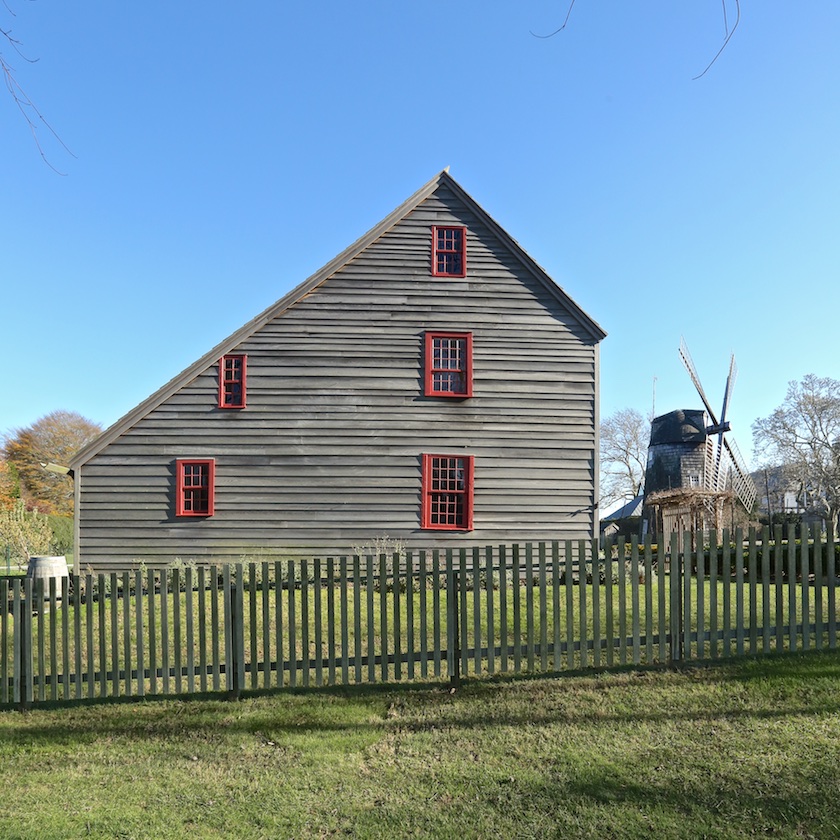
MULFORD FARM: This ancient house was built around 1680 for Capt. Josiah Hobart. Samuel Mulford bought the house in 1711, and it remained in the family until 1948.
Visit: East Hampton Historical Society
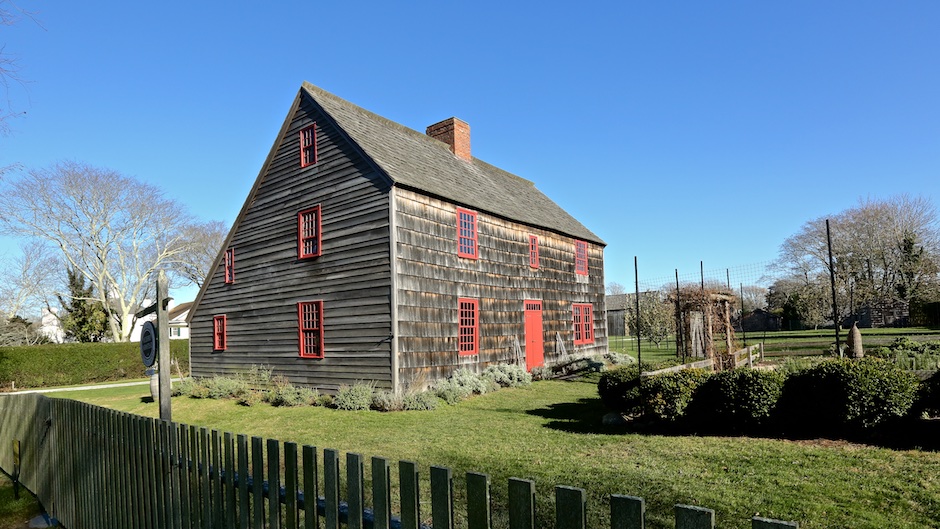
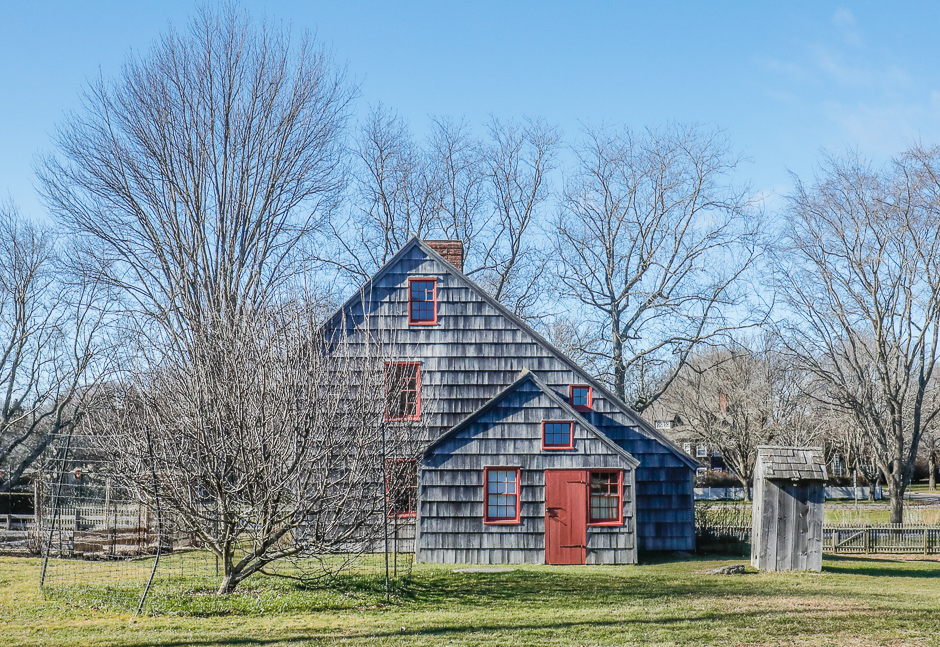

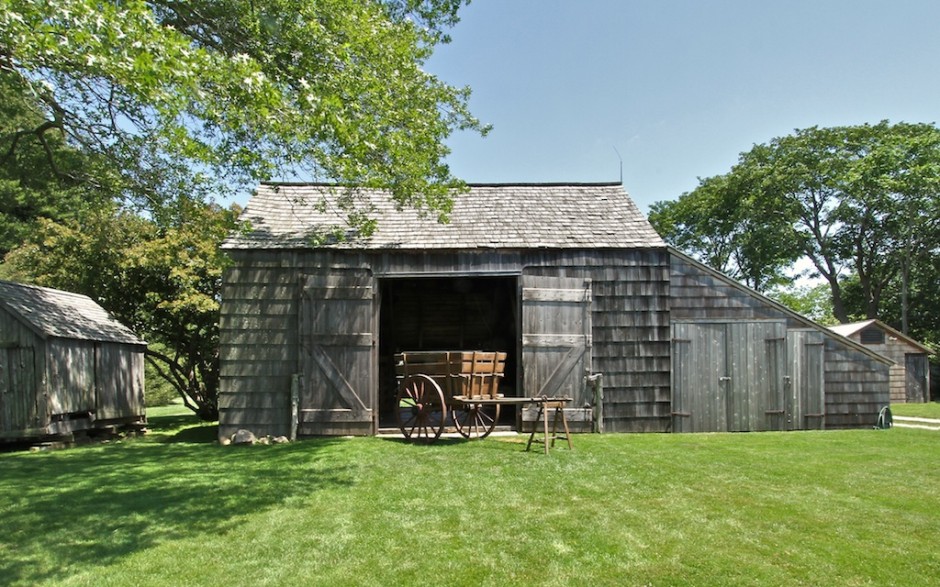
THE BARN AT MULFORD FARM
HOME LOTS AND AGRICULTURE—The common was flanked on either side by long, narrow home lots of eight to twelve acres each. Houses stood at the front of these lots next to the common and were surrounded by agricultural buildings. These home lots were the center of each resident’s farming operation, which extended to outlying lots where crops were grown, livestock was pastured, salt hay was harvested and wood was cut. The East Hampton Historical Society’s Mulford Farm with its house, barn and open setting, is the best representative of an early home lot. The open field of the 1648 Gardiner Home Lot on James Lane provides an intact setting for the Gardiner Windmill, where farmers took their grain to be ground. The 1804 Gardiner Windmill and the vista into the home lot along with Mulford Farm are vivid reminders of East Hampton’s long history as an agricultural community.
Visit: East Hampton HIstorical Society
********************************************

November 4, 2015

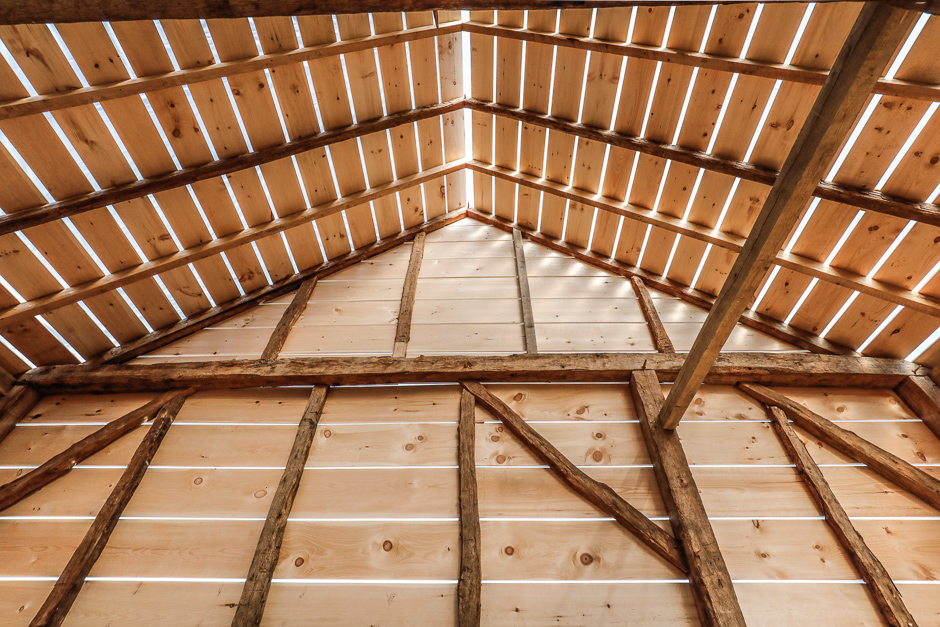
Hedges Barn at Mulford Farm. Ben Krupinski Builders, donation. December 19, 2018.
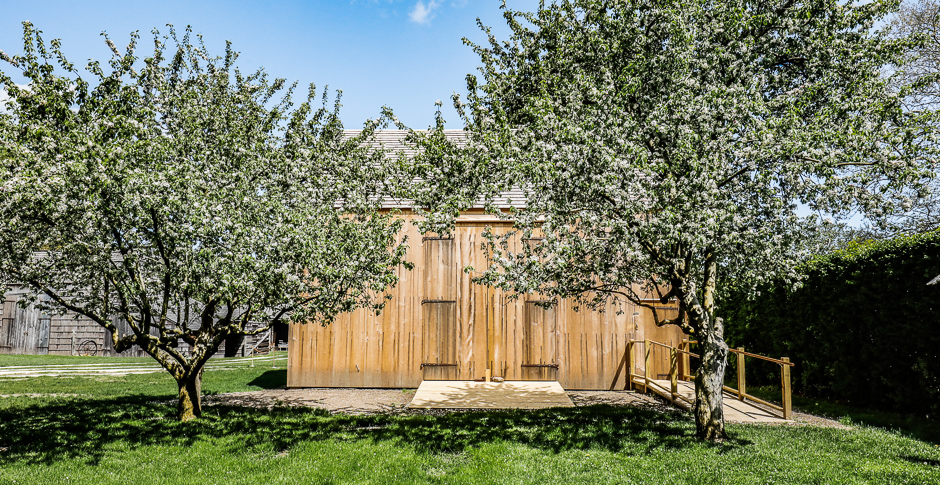
Hedges Barn, April 2019.
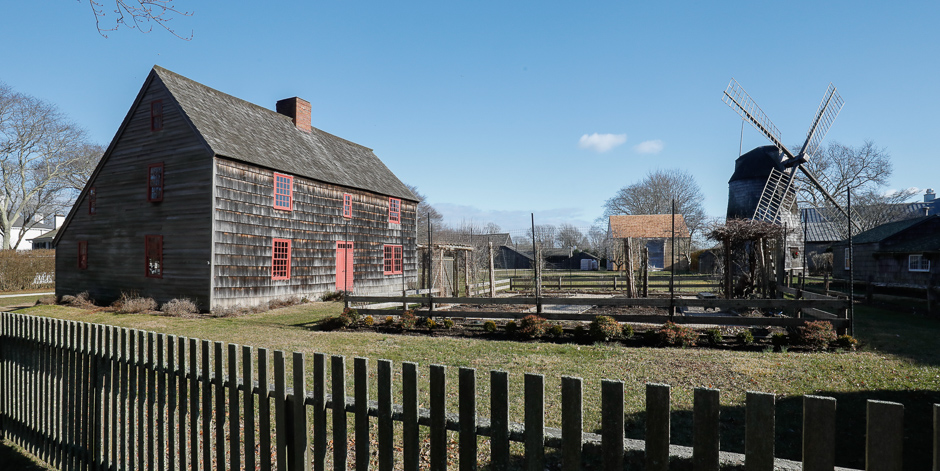
January 9, 2019
—————————————————-
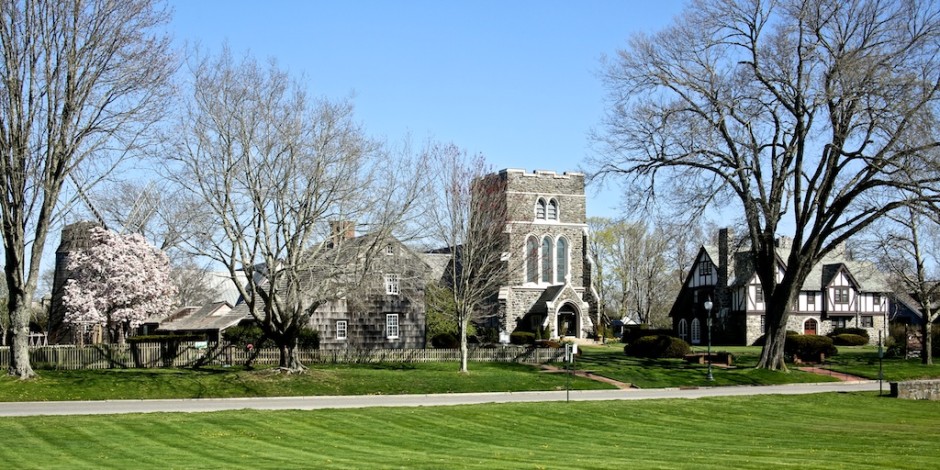
PANTIGO WINDMILL, HOME SWEET HOME, ST. LUKE’S CHURCH & RECTORY
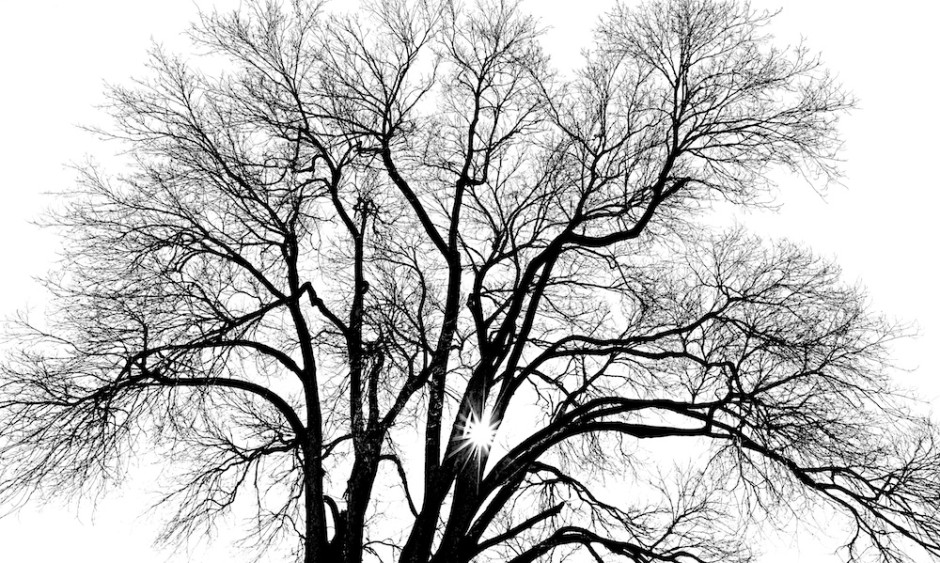
Elm, November 19, 2013.

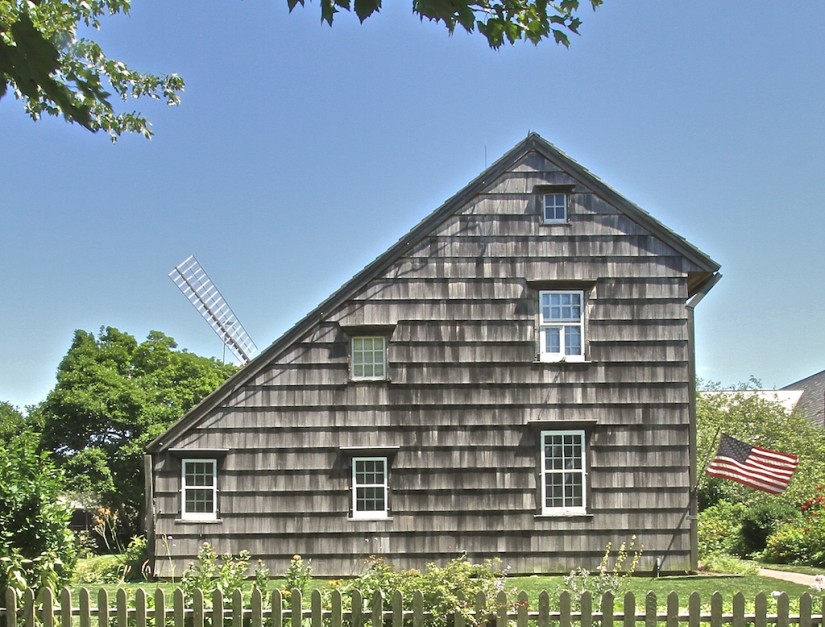
HOME SWEET HOME: This 1720 house was remodeled with Georgian interiors by Capt. Elisha Jones in 1750. John Howard Payne’s famous lyrics are forever tied to the house.
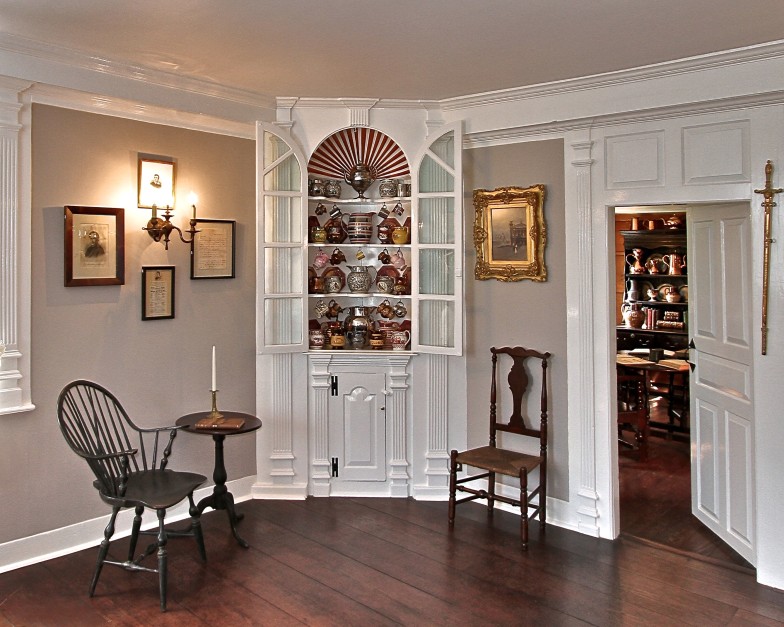
Parlor, Home Sweet Home, 1720, remodeled c. 1750.
Museums operated by the Village and by the East Hampton Historical Society allow the public to experience interior spaces that reveal a sense of daily life on Main Street during past centuries. Captain Elisha Jones envisioned a life of refinement for his family in the Georgian parlor he installed in Home Sweet Home about 1750. Elizabeth Jones, wife of the successful merchant and sea captain, served tea here surrounded by elaborate paneling, fluted pilasters and a shell corner cupboard. After purchasing Home Sweet Home, Gustav and Hannah Buek furnished it with antiques and memorabilia honoring the song’s author, John Howard Payne, whose aunt had lived here.

John Howard Payne (1791-1852). Bronze Sculpture by Henry Baerer. Given by the Faust Club to the City of Brooklyn, New York, and erected in Prospect Park, September, 1873. Loaned to the Village of East Hampton by the City of New York Parks & Recreation, November, 2001.


Home Sweet Home, May 20, 2014

Home Sweet Home Garden, July 19, 2013
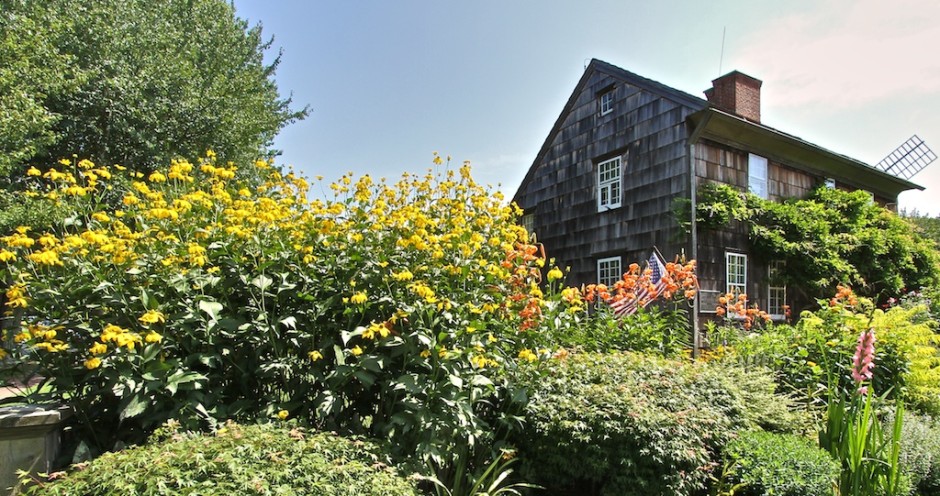
HOME SWEET HOME
—————————————————-
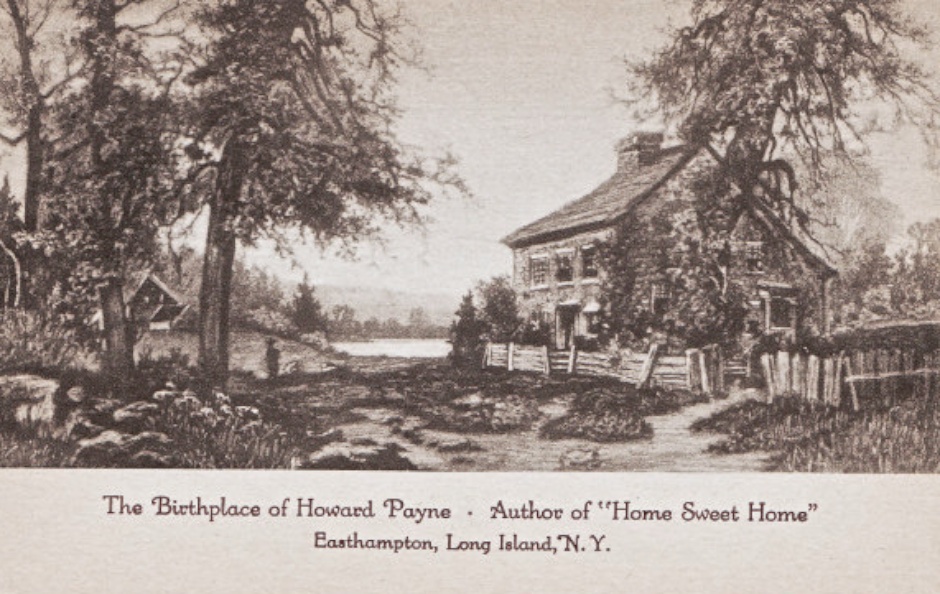
Archival Postcard, Courtesy of the East Hampton Historical Society
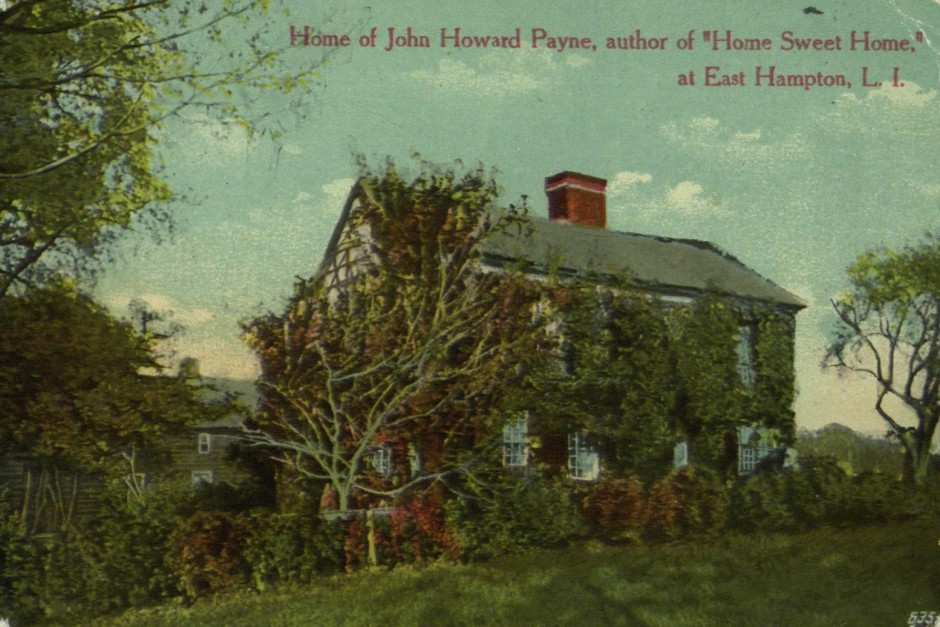
Harvey Ginsberg Postcard Collection. Courtesy of the East Hampton Library’s Long Island Collection.
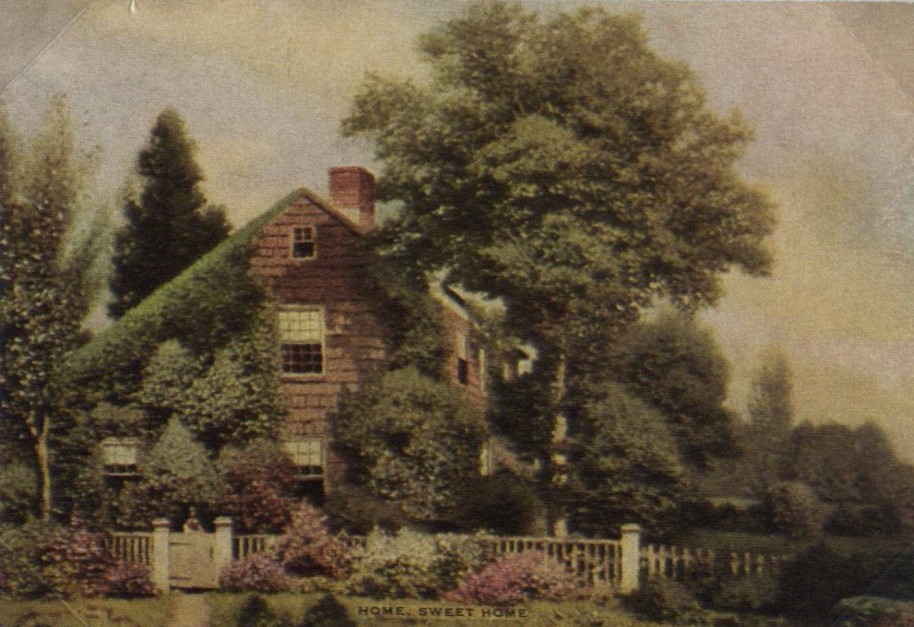
Archival postcard courtesy of the East Hampton Library’s Long Island Collection.
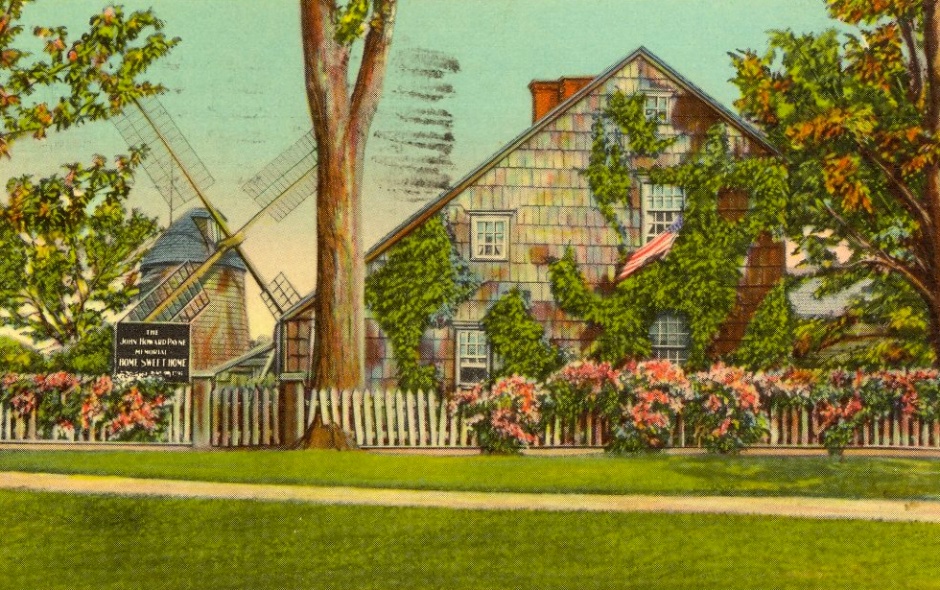
Title: “HOME SWEET HOME” AND THE OLD WINDMILL. LONG ISLAND, N.Y. Archival postcard [detail] courtesy of the Southampton Historical Museum.
—————————————————-

THE PANTIGO WINDMILL: Built by Samuel Schellinger in 1804.
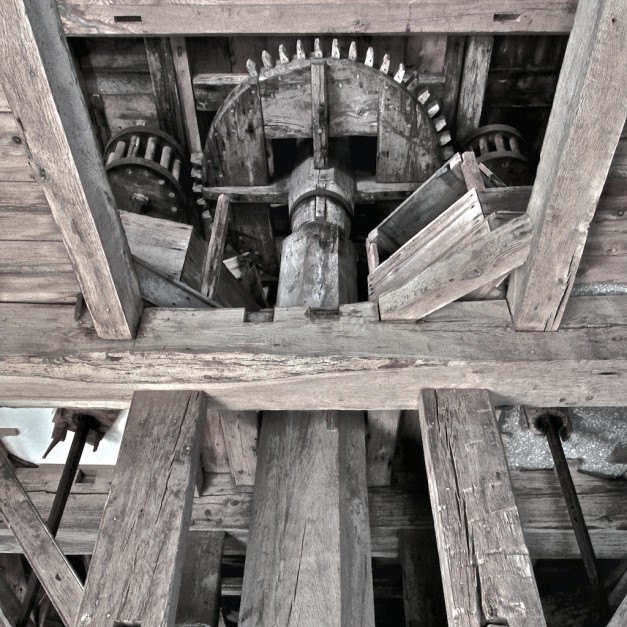 THE PANTIGO WINDMILL: WOODEN GEARS & SHAFT
THE PANTIGO WINDMILL: WOODEN GEARS & SHAFT
Windmills represent the highest expression of the local timber framer’s craft. They are machines with wooden gears and a dense timber frame built to capture the power of the wind to grind grain. In the above interior of the Pantigo Windmill, note the post at the center that rises to receive the bearing of the shaft that drives the millstones. The post demonstrates the craftsman’s ability to hew a complex form, a precise tapering octagon, out of a tree trunk.

Mulford Farm, left, Home Sweet Home, center, St. Luke’s Episcopal Church, right. May 20, 2014

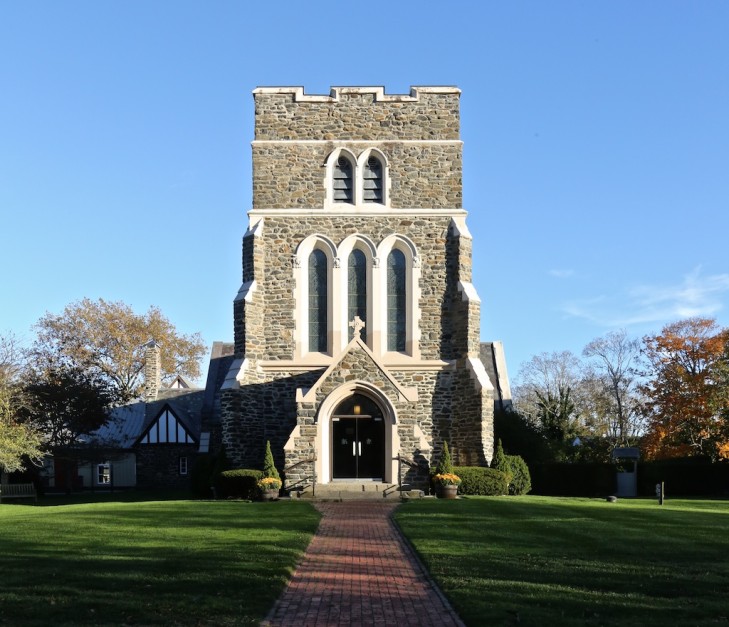
ST. LUKE’S EPISCOPAL CHURCH: Thomas Nash, architect of this 1909 church, modeled it after All Saints Church in Maidstone, England.
Visit: St. Luke’s Episcopal Church
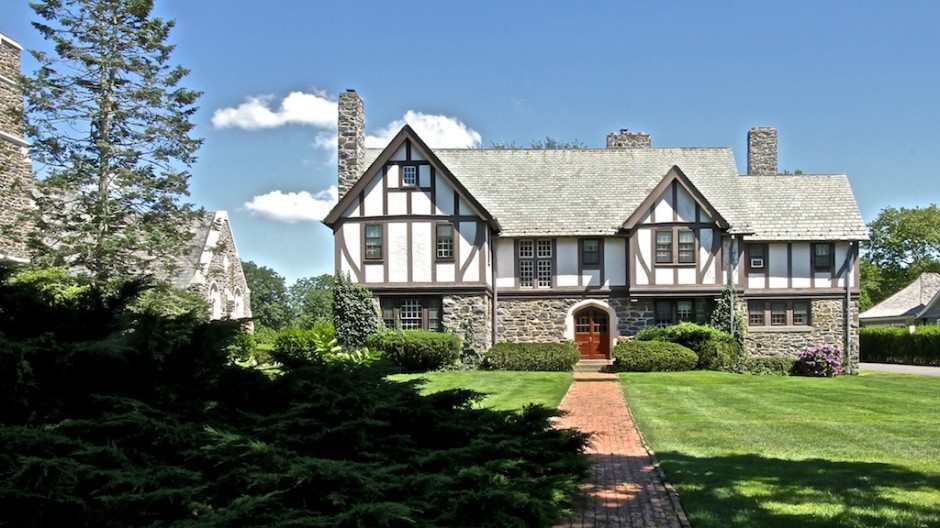
ST. LUKE’S RECTORY: Medieval revival structures fit into the romantic history of East Hampton. The summer residents in particular found East Hampton very English-like.
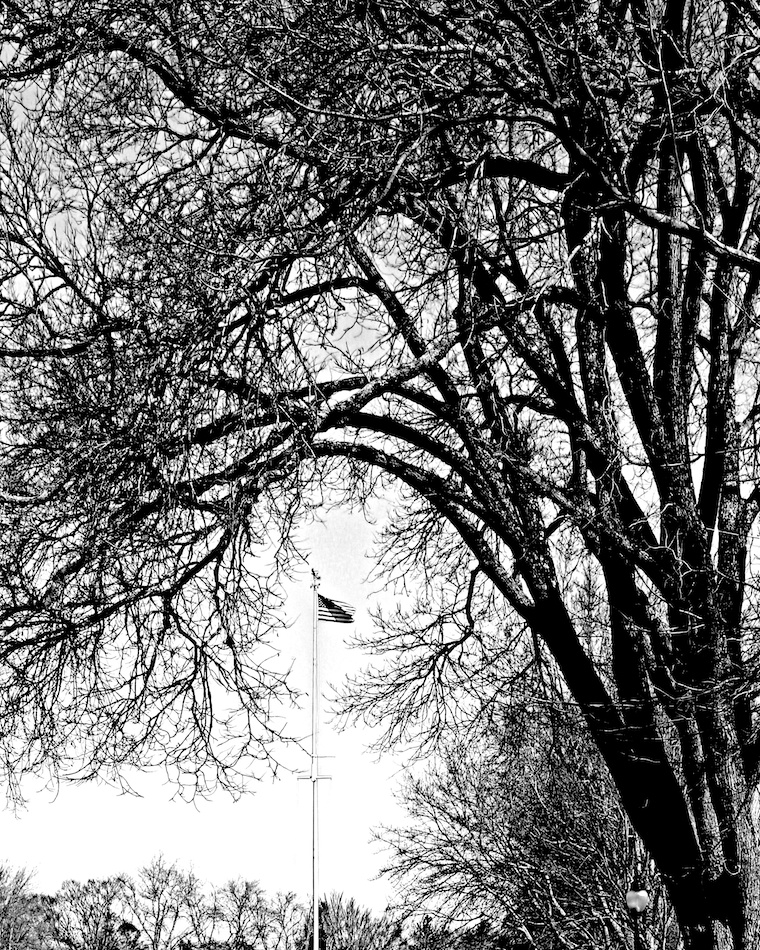
“This Flag Pole dedicated to the Village of East Hampton in memory of George Lodowick McAlpin, 1856-1922, by members of his family, July 4, 1926.” — Plaque.
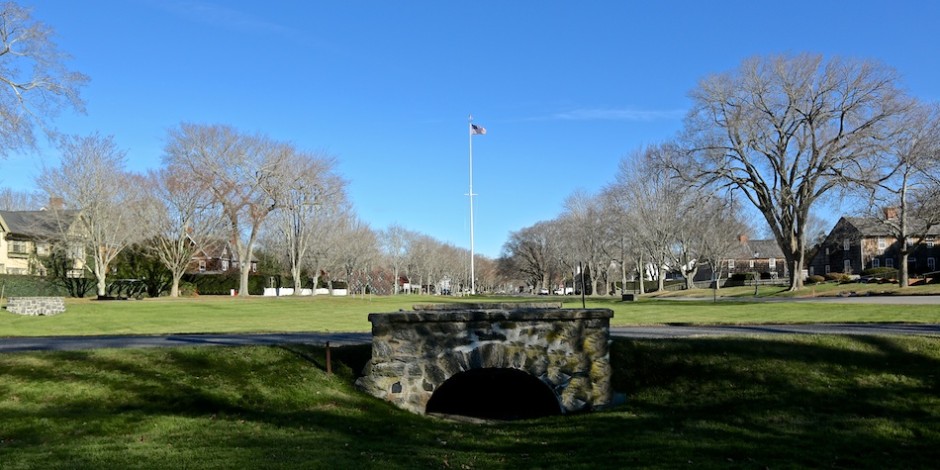
Village Green: Baker House 1650 on the left, Mulford Farm and Home Sweet Home on the right.

Village Green, August 15, 2019
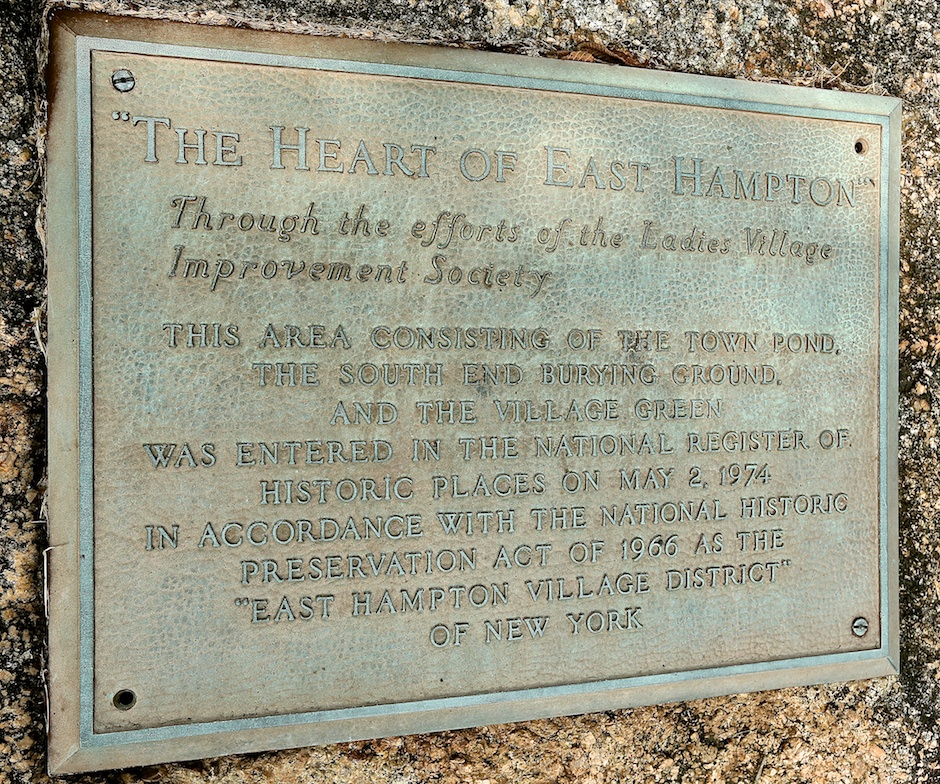
Plaque on rock in front of Mulford Farm.
“THE HEART OF EAST HAMPTON”
Through the efforts of the Ladies Village Improvement Society
THIS AREA CONSISTING OF THE TOWN POND, THE SOUTH END BURYING GROUND, AND THE VILLAGE GREEN WAS ENTERED IN THE NATIONAL REGISTER OF HISTORIC PLACES ON MAY 2, 1974 IN ACCORDANCE WITH THE NATIONAL HISTORIC PRESERVATION ACT OF 1966 AS THE “EAST HAMPTON VILLAGE DISTRICT” OF NEW YORK.
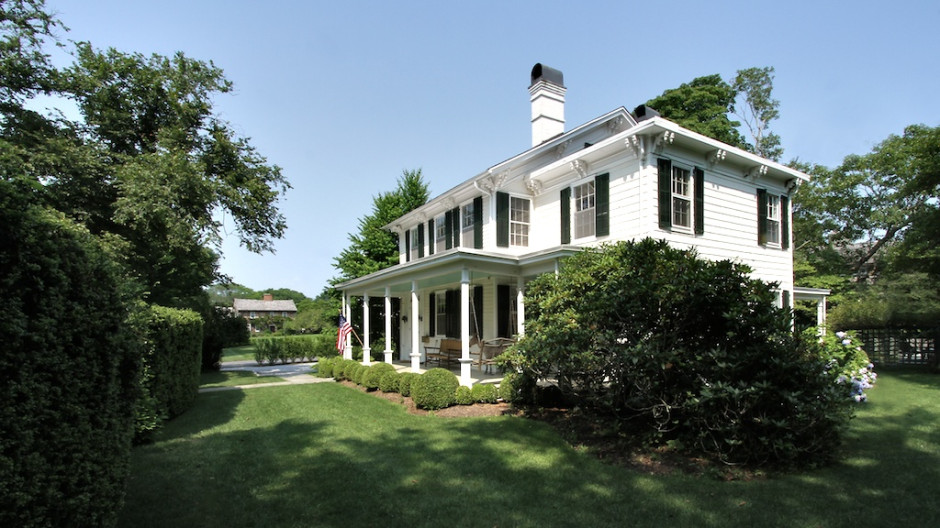
EZEKIEL HOWES HOUSE: This house built around 1850 by Ezekiel Howes, a Sag Harbor whaling captain, retains original Greek Revival features and a somewhat later Italianate porch. Private residence.

MILL COTTAGE: An ancient timber-frame structure on the Gardiner Home Lot was made into this dwelling in 1870 for the miller tending the Gardiner Windmill.
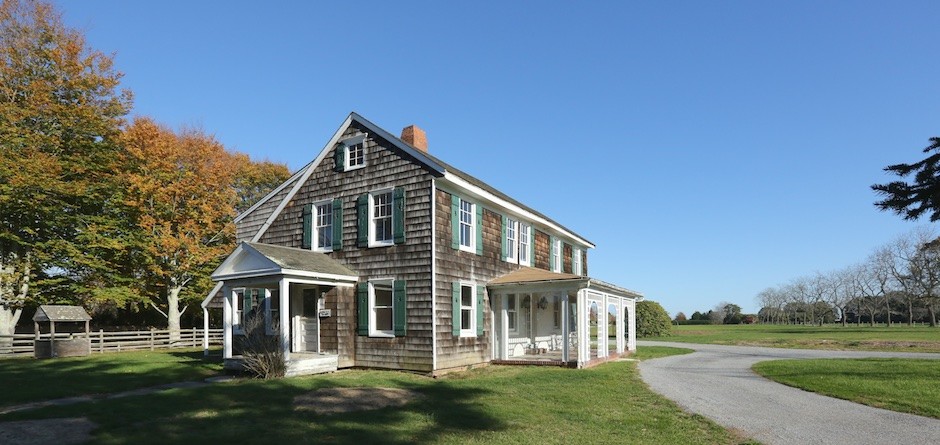
Mill Cottage, November 4, 2015

April 18, 2018
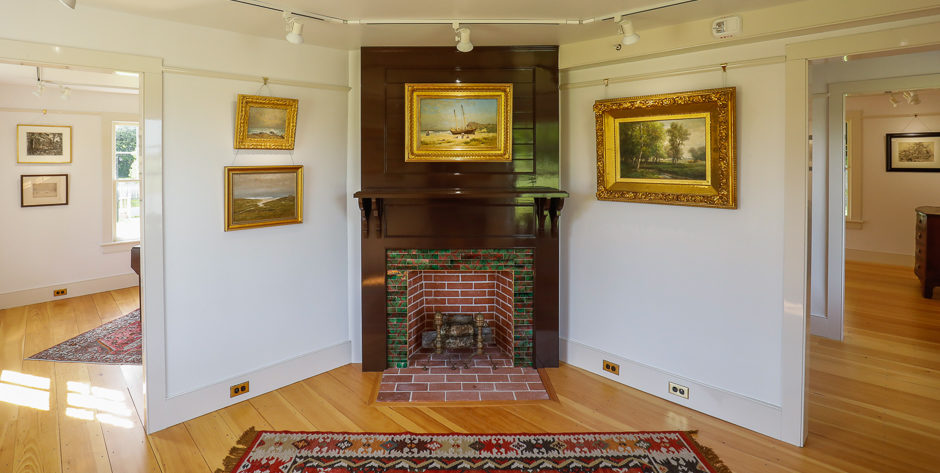
Gardiner Mill Cottage Gallery, June 4, 2019
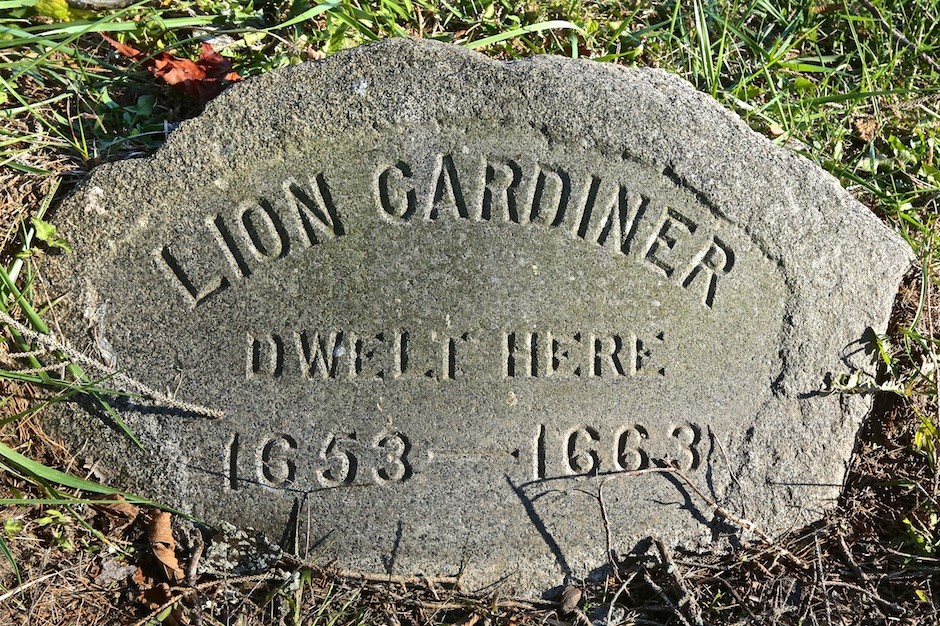
Lion Gardiner (1599 – 1663)
Visit: AAQ Restoration: Gardiner Mill Cottage Gallery

December 7, 2018

GARDINER WINDMILL: With a lack of streams for water power, wind power was used to grind grain. This 1804 mill built by Nathaniel Dominy V stands at its original location.

GARDINER COTTAGE: This small Cape Cod cottage with a massive chimney looks today as it did in the 19th century, retaining the original door and windows. Private residence.
FARMHOUSES: The group of early houses and their direct relationship with the street comprise the dominant image of the historic district. The houses are typical New England forms and reflect cultural ties with that region. The saltbox house is illustrated by Mulford Farm, with its two-story front wall facing the southern sun and a long roof sloped against the winter wind. The Gardiner Cottage, an example of a Cape Cod cottage, exemplifies the plain exterior and the sparing use of decoration typical of East Hampton’s early builders. The Jonathan Dayton House, well maintained as The 1770 House, has the symmetrical facade of the Georgian and Federal periods and is embellished with a pedimented entrance porch and a modillion cornice.

SOUTH END BURYING GROUND–the grave of Thomas James dates from the 1600’s.
 IN MEMORY OF LION GARDINER, 1599-1663. Tomb, built in 1886, was designed by James Renwick, Jr., noted architect of St. Patrick’s Cathedral.
IN MEMORY OF LION GARDINER, 1599-1663. Tomb, built in 1886, was designed by James Renwick, Jr., noted architect of St. Patrick’s Cathedral.
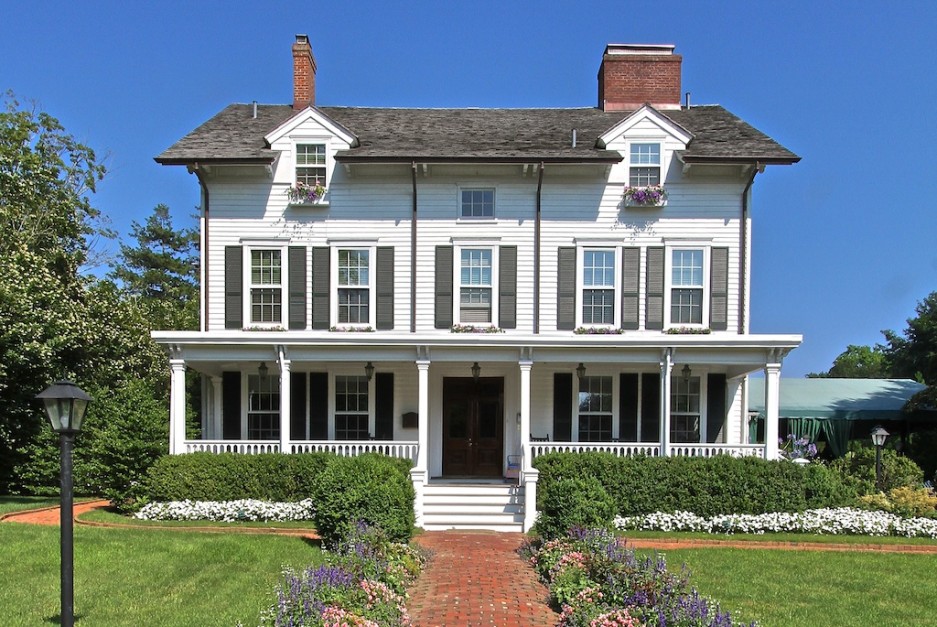
HEDGES INN
Summer Boarding Houses: By the 1840s East Hampton began to be discovered as a summer resort. With the extension of the Long Island Railroad to Bridgehampton in 1870, East Hampton’s beaches, cool sea breezes and quiet, rural environment became more easily accessible to residents of New York City. Summer visitors stayed in boarding houses on Main Street. The Hedges Inn, built in 1873 by John D. Hedges, featured a broad veranda, a double front doorway, a commodious dining room across the back of the house, a large kitchen wing and rooms for boarders on the upper floors. Two other early boarding houses, The Huntting Inn and The Osborn House (now c/o The Maidstone), remain open today providing visitors with an experience of historic East Hampton.
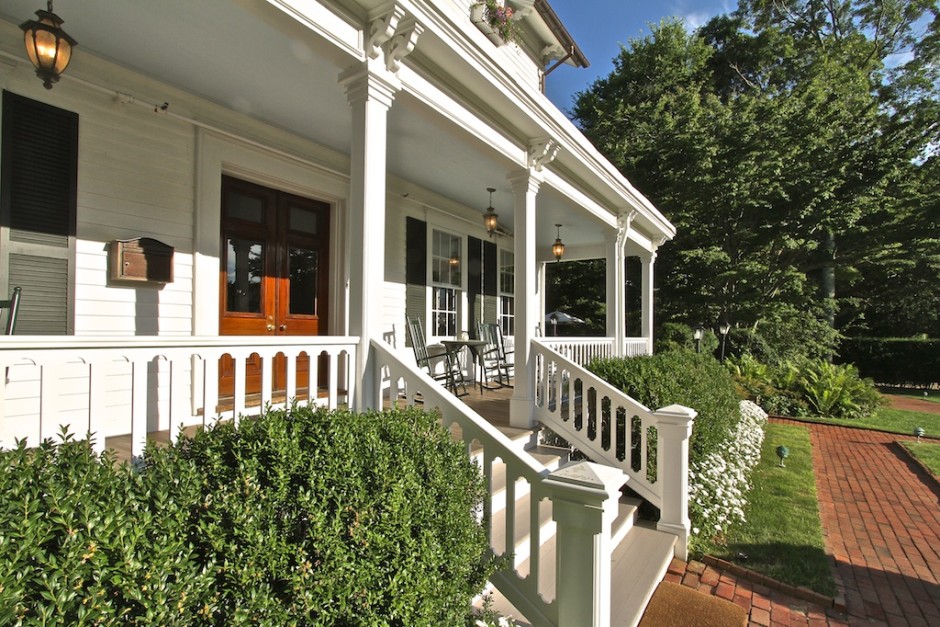
THE HEDGES INN VERANDA.
———————————————
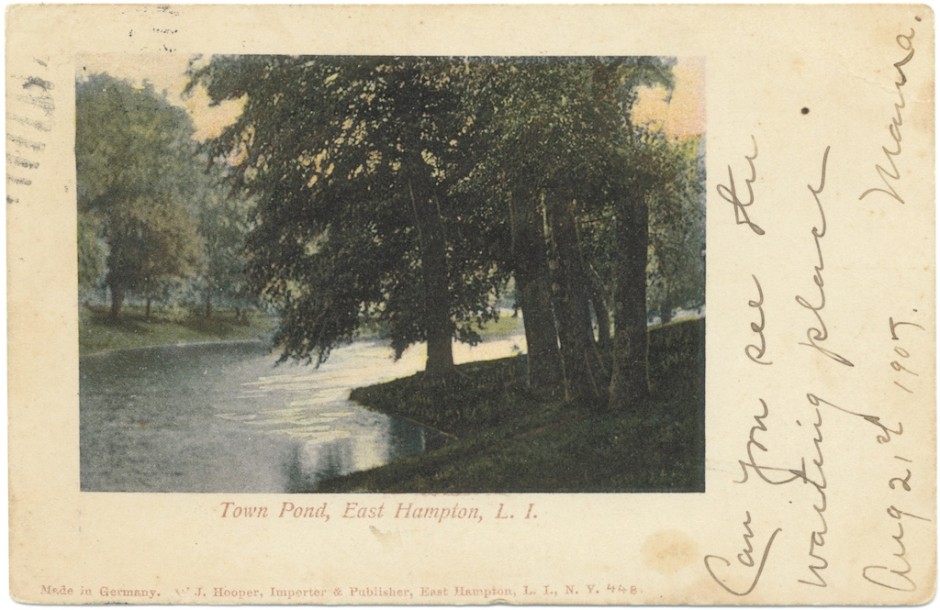
Postcard courtesy of the East Hampton Historical Society.
——————————————–
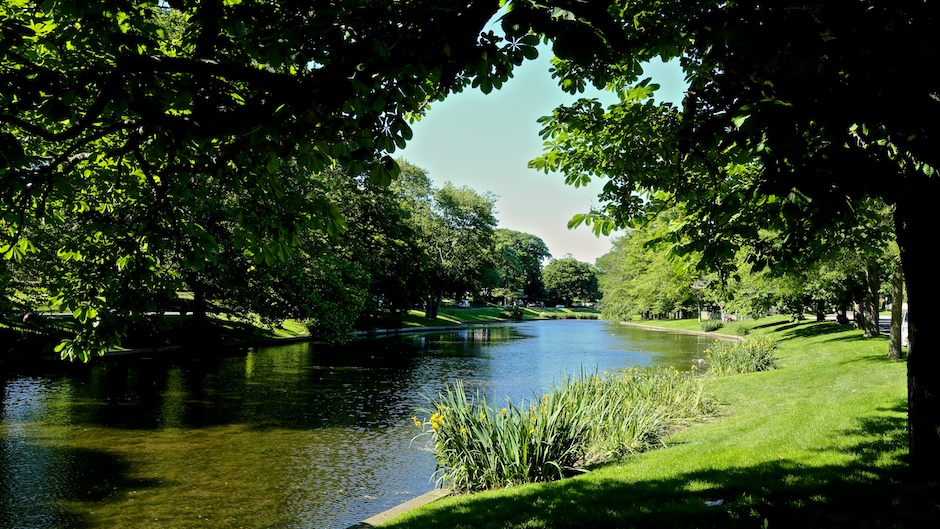
Town Pond. June 16, 2014.
——————————————–
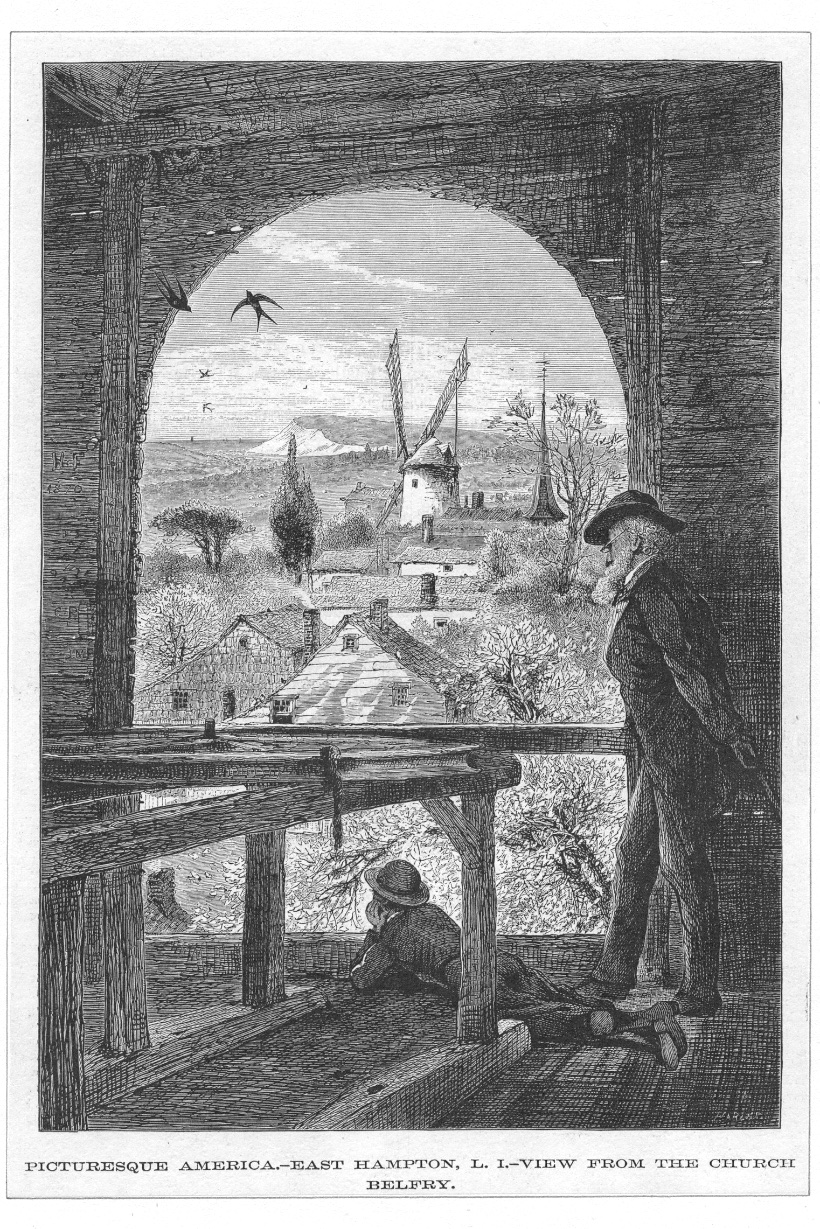
New York Public Library Digital Collection.
~~~~~~~~~~~~~~~~~~~~~~~~~~~~~~~~~~
Visit: East Hampton — Ocean Avenue to Main Beach Tour
____________________________________________________________
Most of these images, except for the post card, were prepared for the Incorporated Village of East Hampton in 2011 for a publication to celebrate the 25th anniversary of the Main Street Historic District. Reproduced courtesy of the Village of East Hampton.
Narrative by Robert Hefner, Director of Historic Services, Village of East Hampton; and Richard Barons, Executive Director, East Hampton Historical Society.
Photographs/copyright, except postcard views, Jeff Heatley.
_________________________________________________________________________________
